Results 9,531 to 9,540 of 12096
Thread: Anandtech News
-
05-29-19, 03:11 PM #9531
Anandtech: ASRock Confirms Support for Ryzen 3000 APUs in DeskMini A300 SFF System
The industry loves a good small form factor platform, and ASRock’s Deskmini A300 is a great example of this. Designed to work with AMD’s APUs, the idea is to have a great amount of raw horsepower in a small and dense system. At ASRock’s press conference today, the company confirmed that its Deskmini A300 will support the as-yet unannounced AMD Ryzen 3000 series APUs.
AMD only announced the first five desktop CPUs for the Ryzen 3000 family a couple of days ago, all of which were CPU only designs based on Zen 2 CPU cores and no integrated graphics. We highly suspect that an APU platform will follow in due course, a platform we believe to be called ‘Renoir’, however the design of it is unknown at this point – whether it is monolithic or based on the chiplet design. With so little details known, it makes it somewhat amusing that one of AMD’s partners is ready to publicly announce that their SFF platform, already on the market, will support a family of processors that hasn’t even be acknowledged.
Given that the Deskmini A300 design is built for a maximum of 65W processors, we can surmise that the Ryzen 3000 APU family will also have a peak TDP of 65W in order for this claim to be true. Other than that, it would be hard to guess any other information at this point. We are going to go and ask ASRock for more information.
Want to keep up to date with all of our Computex 2019 Coverage? 
Laptops
Hardware
ChipsFollow AnandTech's breaking news here!
More...
-
05-29-19, 06:51 PM #9532
Anandtech: PCI-SIG Finalizes PCIe 5.0 Specification: x16 Slots to Reach 64GB/sec
Following the long gap after the release of PCI Express 3.0 in 2010, the PCI Special Interest Group (PCI-SIG) set about a plan to speed up the development and release of successive PCIe standards. Following this plan, in late 2017 the group released PCIe 4.0, which doubled PCIe 3.0’s bandwidth. Now less than two years after PCIe 4.0 – and with the first hardware for that standard just landing now – the group is back again with the release of the PCIe 5.0 specification, which once again doubles the amount of bandwidth available over a PCI Express link.
Built on top of the PCIe 4.0 standard, the PCIe 5.0 standard is a relatively straightforward extension of 4.0. The latest standard doubles the transfer rate once again, which now reaches 32 GigaTransfers/second. Which, for practical purposes, means PCIe slots can now reach anywhere between ~4GB/sec for a x1 slot up to ~64GB/sec for a x16 slot. For comparison’s sake, 4GB/sec is as much bandwidth as a PCIe 1.0 x16 slot, so over the last decade and a half, the number of lanes required to deliver that kind of bandwidth has been cut to 1/16th the original amount.
The fastest standard on the PCI-SIG roadmap for now, PCIe 5.0’s higher transfer rates will allow vendors to rebalance future designs between total bandwidth and simplicity by working with fewer lanes. High-bandwidth applications will of course go for everything they can get with a full x16 link, while slower hardware such as 40GigE and SSDs can be implemented using fewer lanes. PCIe 5.0’s physical layer is also going to be the cornerstone of other interconnects in the future; in particular, Intel has announced that their upcoming Compute eXpress Link (CXL) cache coherent interconnect will be built on top of PCIe 5.0.
Meanwhile the big question, of course, is when we can expect to see PCIe 5.0 start showing up in products. The additional complexity of PCIe 5.0’s higher signaling rate aside, even with PCIe 4.0’s protracted development period, we’re only now seeing 4.0 gear start showing up in server products; meanwhile the first consumer gear technically hasn’t started shipping yet. So even with the quick turnaround time on PCIe 5.0 development, I’m not expecting to see 5.0 show up until 2021 at the earliest – and possibly later than that depending on just what that complexity means for hardware costs.PCI Express Bandwidth
(Full Duplex)Slot Width PCIe 1.0
(2003)PCIe 2.0
(2007)PCIe 3.0
(2010)PCIe 4.0
(2017)PCIe 5.0
(2019)x1 0.25GB/sec 0.5GB/sec ~1GB/sec ~2GB/sec ~4GB/sec x2 0.5GB/sec 1GB/sec ~2GB/sec ~4GB/sec ~8GB/sec x4 1GB/sec 2GB/sec ~4GB/sec ~8GB/sec ~16GB/sec x8 2GB/sec 4GB/sec ~8GB/sec ~16GB/sec ~32GB/sec x16 4GB/sec 8GB/sec ~16GB/sec ~32GB/sec ~64GB/sec
Ultimately, the PCI-SIG’s annual developer conference is taking place in just a few weeks, on June 18th, at which point we should get some better insight as to when the SIG members expect to finish developing and start shipping their first PCIe 5.0 products.
More...
-
05-29-19, 06:51 PM #9533
Anandtech: ASMedia Demonstrates ASM3242 USB 3.2 2x2 Controller: Available in August
ASMedia has finished development of its USB 3.2 2x2 controller and will make it available to makers of motherboards in the coming months. The company is demonstrating cards featuring its ASM3242 chip at Computex, so the controller is indeed ready for prime time.
ASMedia’s ASM3242 USB 3.2 2x2 controller uses a PCIe 3.0 x4 interface to ensure maximum amount of bandwidth it can provide to USB peripherals, 20 Gb/s in the case of this particular standard. As usual with ASMedia, the ASM3242 was designed completely in-house, it has the company’s own PHY and control logic.
The USB 3.2 uses two high-speed USB Type-C Tx/Rx channels to achieve 20 Gbps maximum throughput, thus retaining the USB 3.1 physical layer data rates and encoding techniques, but just using additional wires found in USB Type-C cables that would otherwise be used for various alternative modes (Alt Modes).
ASMedia says that it will start shipments of the ASM3242 to interested parties in mass quantities this August, so the first PCs featuring the controller will be available this Fall, around two years after the USB 3.2 2x2 specification was finalized.
While the USB4 technology is knocking the door, it is not quite here yet. The current version of the specification is 0.96 and the final one is expected to arrive later this summer if everything goes as planned. Once the spec is finalized, it will take developers of controllers at least 18 months to design appropriate chips and bring them to market (i.e., we are at least 1.5 – 2 years away from USB4-enabled PCs). That said, for people looking for high-speed USB connectivity the USB 3.2 2x2 technology is a way to go, which is why for makers of PCs and motherboards it makes a great sense to offer USB 3.2 2x2 connectivity on their products this year.
Want to keep up to date with all of our Computex 2019 Coverage? 
Laptops
Hardware
ChipsFollow AnandTech's breaking news here!
More...
-
05-30-19, 10:47 AM #9534
Anandtech: The ASUS Prime X299 Edition 30 Motherboard: 30 Years of ASUS, now with OLE
In the midst of all the X570 motherboard reveals at Computex 2019, ASUS has released an updated version of its Prime X299 model, the ASUS Prime X299 Edition 30. This new model celebrates 30 years of ASUS with revamped aesthetics and includes an onboard LiveDash OLED display, triple M.2, Wi-Fi 6, 5 G LAN, and a Thunderbolt 3 port.
The ASUS Prime X299 Edition 30 comes packed with a whole host of features including three full-length PCIe 3.0 slots operating at x16, x16/x16, and x16/x16/x8 when used with an Intel Skylake-X processor with 44-lanes. With lower spec 28-lane processors, the lanes operate at x16, x16/x8, and the third slot at just x2. On the design, ASUS has gone with a white and silver-toned array of covers and heatsinks, with a new LiveDash OLED display which includes compatibility with Windows Hello, gesture control, and voice input.
There's a total of three M.2 slots with two inclusive of integrated M.2 heatsinks, while the third is vertically mounted; also present is eight SATA ports and a Thunderbolt 3 port is also featured. The power delivery consists of 16-phases with two 8-pin 12 V ATX CPU power inputs for the enthusiast looking to overclock a supported LGA-2066 processor; the heatsinks look large and robust, with enough to reportedly sustain up to 544 W of heat due to a hidden 40 mm fan. The X299 Prime Edition 30 also has eight memory slots capable of supporting up to DDR4-4266 in quad channel, with a maximum supported capacity of up to 128 GB.
On the rear panel is some of the board's top features, which includes a new Wi-Fi 6 compliant Intel AX200 adapter with 2x2 MU-MIMO capabilities, as well as dual LAN with an Aquantia AQC-111C 5 GbE, and an assisting Intel I219-V 1 GbE port. The pre-installed I/O shield is white and matches up with the boards aesthetic, and has five 3.5 mm audio jacks and S/PDIF optical out powered by a Realtek ALC S1220A HD audio codec; this is supported by Dolby DTS X Ultra.
Gallery: ASUS X299 Prime Edition 30 Motherboard Gallery





No information on the price and availability is currently known, but the ASUS X299 Prime Edition 30 will be on display at the ASUS booth during Computex 19, where we may possibly hear some more details.
Want to keep up to date with all of our Computex 2019 Coverage? 
Laptops
Hardware
ChipsFollow AnandTech's breaking news here!
More...
-
05-30-19, 10:47 AM #9535
Anandtech: Steelseries Unveils Fully Adjustable OmniPoint Switch Actuation on Apex Pr
During Computex 2019, SteelSeries announced two new keyboards with a new switch type and a newly designed switch concept. Both the SteelSeries Apex Pro and Apex Pro TKL feature its new mechanical switch with a fully adjustable actuation point which it is calling OmniPoint.
The new SteelSeries OmniPoint switches are designed to allow gamers to set the actuation point of the switch giving them full control over the switch. Using magnetic sensors, the keys can be adjusted to the exact user preference. This means that both the Apex Pro and the smaller Apex Pro TKL can be adjusted for gaming, or set for productivity tasks such as word processing. With the magnetic sensors, it Steelseries promises that the OmniPoint switches are faster in response time than conventional switches. Users can set the OmniPoint switches to an actuation point of between 0.4 mm for super fast response in fast-paced games and 3.6 mm for more general users. Both models include RGB LED lighting and are constructed from an aluminum frame.
SteelSeries Apex Pro TKLAlso featured on the SteelSeries Apex Pro and Apex Pro TKL is an OLED smart display. This allows users to receive instant notifications in games such as CS: GO and DOTA 2, as well as applications such as Spotify, and Discord. Users can customize the screen within the bundled SteelSeries Engine software, but this isn't a requirement for users to adjust the actuation point on the OmniPoint switches.
The SteelSeries Apex Pro will be available for an MSRP of $200, with the smaller Apex Pro TKL retailing for around $180. Both models will launch on June 11th in the USA, while the European and Asian markets aren't expected to see them launch until the fall.
Want to keep up to date with all of our Computex 2019 Coverage? 
Laptops
Hardware
ChipsFollow AnandTech's breaking news here!
More...
-
05-30-19, 12:05 PM #9536
Anandtech: NZXT Refreshes H Series, New H510 Elite Chassis With ARGB
At Computex 2019, renowned case and cooling manufacturer NZXT unveiled its new H series refresh of cases featuring small, but subtle changes across its range. Also on display was its brand new premium H510 Elite chassis with an integrated GPU mount, USB 3.1 G2 front panel IO, and inclusive ARGB fans.
Starting with the revised NZXT H series, the most predominant inclusion to the range is front panel IO USB 3.1 G2 Type-C ports. Each refreshed model including the H210, H210i, H510, H510i, H710, and H710i. Each i series model from the range also includes its new smart device v2 CAM-powered controller which offers two HUE 2 RGB lighting channels and three RGB fans with both voltage regulated or PWM fans to be used. Another subtle, yet interesting change is the new SSD mounting trays. The changed design means that thumbscrews are no longer needed to install, and features a new design for seamless installation, without looking garish.
Gallery: NZXT H Series Refresh Gallery





The H510 Elite adds more premium to the mix with front and side tempered glass panels, two NZXT Aer RGB 2 fans in the front and a single addressable RGB LED strip; users can customize the lighting effects with the CAM software. Also on the front panel IO is USB 3.1 G2 Type-C which has been integrated across the entirety of the new range. One of the major design improvements is a new patented cable routing kit which allows users to better cable manage their system. An integrated GPU mount allows users to vertically mount a graphics card, but NZXT does not supply a PCIe riser card which is needed for operation. On the cooling, the NZXT H510 Elite is optimized for water cooling with a removable radiator and fan mounting bracket for easier installation.
The H510 Elite has an MSRP of $170 with it expected to filter into retail channels in July. The refreshed H series is competitively priced against the competition, with the H210 ($90), H210i ($120), H510 ($80), H510i ($110), H710 ($170), and the H710i ($200). The range includes a model at most mid-level to high-end price points with each case available in matte white, matte black, and matte black/red. All of the refreshed H series models are all expected to launch in early July.
Want to keep up to date with all of our Computex 2019 Coverage? 
Laptops
Hardware
ChipsFollow AnandTech's breaking news here!
More...
-
05-30-19, 12:05 PM #9537
Anandtech: Phanteks Unveils AMP: Inexpensive Modular PSUs up to 750W
Established in 2007 and aiming primarily PC hardware enthusiasts, Phanteks has been expanding in many directions in the recent years. On the one hand, the company started to make ultra-expensive PC cases for no-compromise prosumers, on the other hand the maker began to address customers looking for something with a lower price tag. At Computex, Phanteks introduced its AMP-series power supplies that provide premium features without breaking the bank.
The Phanteks AMP family of PSUs includes three models rated at 550W, 650W, and 750W. All PSUs are rather compact, they are modular and they are 80 Plus Gold certified. Like all modern power supplies, Phanteks’s AMP feature PCIe, EPS, SATA, and other connectors required by contemporary enthusiast-class PCs.
To make AMP power supplies more attractive to owners of Phanteks’s premium Revolt Pro PSUs, the new units can be connected to Revolt Pro PSUs for additional power or redundancy.
In line with its promise of affordability, the Phanteks AMP PSUs are priced at $89, $99, and $109 for 550W, 650W, and 750W model respectively.
Gallery: Phanteks Unveils AMP: Inexpensive Modular PSUsWant to keep up to date with all of our Computex 2019 Coverage? 
Laptops
Hardware
ChipsFollow AnandTech's breaking news here! 




More...
-
05-30-19, 01:33 PM #9538
Anandtech: Rivet Networks Launches E2600 Gigabit Network Controller
This year Computex is full of launches, and the land of network controllers is no exception. Rivet Networks, who makes the Killer line of enhanced NICs, is updating its popular E2500 design with the E2600, which is initially going to be found on a series of MSI notebooks as well as moving out into motherboard designs and system designs from popular OEMs. The new design enhances the Killer Intelligence Engine inside the controller, providing a more detailed understanding of the traffic passing through.
The Intelligence Engine inside the Rivet Network products is actually rather neat (personal opinion). Through a variety of hardware algorithms, it can determine what type of traffic is going through the chip without actually looking at the data: VOIP, gaming, video download, file download, file upload, streaming, torrents, and many other besides. Rivet Networks can also parse out to a large degree which service is being used (Netflix vs Youtube for example), all without actually looking at the data being transferred, but at the patterns of data transfer. By analysing the data flow, it can prioritise packets that are latency sensitive, such as games or voice, over non-latency sensitive data, such as downloads. In can do this under the hood without any additional CPU load or monitoring services, or users can override the settings in software. The new Killer E2600 enables the company to improve its update roadmap going into the future by expanding its capabilities.
New features in the Killer stack also include network performance optimization for end-users. The updated tool to help users adjust the hardware based network prioritization also includes an optimization tool that can analyse the quality of the network and the system and provide suggestions (such as closing programs, disabling services, software prioritization adjustment) that might assist in improved frame rates and a better gaming user experience. This tool is included in the software for the Rivet Wi-Fi 6 solution also.
Laptops with the E2600 are being demonstrated at Computex, and we expect to see it migrate into desktops over the course of 2019.
Want to keep up to date with all of our Computex 2019 Coverage? 
Laptops
Hardware
ChipsFollow AnandTech's breaking news here!
More...
-
05-30-19, 03:07 PM #9539
Anandtech: Spotted at Computex: Let Bygones be Bygons, with a Sugon Hygon
Big credit to Patrick Kennedy from ServeTheHome for spotting this gem on the show floor, but it looks like if you want a Chinese branded EPYC CPU with some minor changes, it’s coming. Back in 2016, AMD and Hianjin Jaiguang Advanced Technology Investment Co. (THATIC) formed a joint venture (JV) to develop custom Zen-based processors just for the Chinese market. Within the JV, AMD would provide its Zen microarchitecture, whereas the rest of the SoC would be designed by the JV. AMD owns 49% of the company, while THATIC owns 51%. The first product out of that partnership is the Hugon Dhyana family of processors, and the first retailer with systems is Sugon.
There are lots of questions surrounding exactly what these CPUs are. A Weibo user from China has published a screenshot allegedly taken on one of Hugon Dhyana-based machines which reveals that the eight-core Dhyana 3185 features 768 KB L1 cache, 4 MB L2 cache, and 16 MB L3 cache, the same configuration as AMD’s low-end eight-core EPYC processors. They look like EPYC processors, but with different cryptography engines inside the chip. Differences beyond that are unknown, but it still uses the same packaging and the same socket as EPYC. Now with a visual image, we can tell another key significant difference – while the carrier for Threadripper is orange, and for EPYC is blue, with Hygon CPUs it is red. This is very important.
Other details about the CPU were not present – we found the CPU in a system being developed by one of the JV OEM partners. We’re working with that partner to hopefully get a system in for testing.
Interestingly enough, we got the bottom right of the CPU translated. A literal translation is
'Using Cores to Calculate The Future'However, the second character used in the slogan is a homonym, which could be translated as:
'Using Passion to Calculate The Future'For a Chinese CPU, the synergestic phrasing is very poetic.
Want to keep up to date with all of our Computex 2019 Coverage? 
Laptops
Hardware
ChipsFollow AnandTech's breaking news here!
Note, if anyone from Sugon or Hygon wants to get in touch to talk about a review, please email our CPU editor Dr. Ian Cutress: ian@anandtech.com
More...
-
05-30-19, 03:07 PM #9540
Anandtech: ASRock Unveils New X570 Taichi: Wi-Fi 6 and DDR4-4666 Support
Highly competitive motherboard manufacturer ASRock revealed its X570 motherboard line-up ahead of the Ryzen 3000 series processors launch. Its 13th iteration of the Taichi design, the ASRock X570 Taichi includes a new RGB inspired design and shifts away from the black and white theme. Included is support for Wi-Fi 6, and interestingly supports DDR4-4666 for the new Ryzen 3000 series of processors.
The ASRock X570 Taichi redefines the range and marks a change in aesthetics across the entirety of the board. Its favored cogwheel design is still a main element of the design but it now includes black heatsink armor around the PCIe slot area. The X570 chipset is actively cooled by a fan, mainly due to the X570 chipsets tendency to run warmer than previous generations. On the rear panel cover as with the chipset heatsink is ARGB for users looking to make a visual statement with their system. The X570 Taichi uses a 14-phase power delivery and has one 8-pin and one 4-pin 12 V CPU power inputs. On the rear panel is a single Intel I211-AT Gigabit port, and features the new 802.11ax Killer AX1650 Wi-Fi 6 wireless adapter.
On the X570 Taichi is three full-length PCIe 4.0 slots operating at x16, x8/x8, and x8/x8/x4, with two PCIe 4.0 x1 slots. Underneath the heatsink armor is three PCIe 4.0 M.2 slots, while the board also supports up to eight SATA devices. For users looking for Thunderbolt connectivity, a Thunderbolt AIC 5-pin connector is present, but support is limited to ASRock's separately supplied AIC card. A total of four memory slots with support for DDR4-4666 are present, with a maximum supported capacity of up to 128 GB. This marks noticeable improvement n terms of the integrated memory controller on the Ryzen 3000 processors; real-world scenarios with speeds this high are still yet to be seen.
Gallery: ASRock X570 Taichi Motherboard Gallery



_thumb.jpg)
_thumb.jpg)
Pricing and availability are currently unknown, but it's expected to be jointly launched alongside the Ryzen 3000 series processors.
Want to keep up to date with all of our Computex 2019 Coverage? 
Laptops
Hardware
ChipsFollow AnandTech's breaking news here!
More...
Thread Information
Users Browsing this Thread
There are currently 12 users browsing this thread. (0 members and 12 guests)




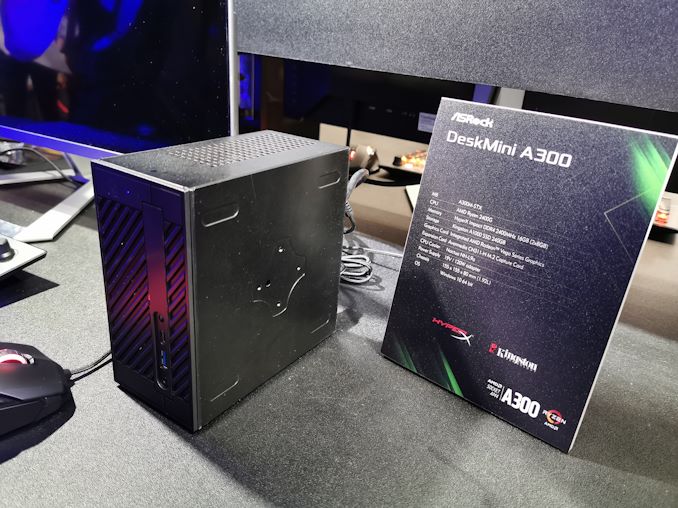

 Quote
Quote
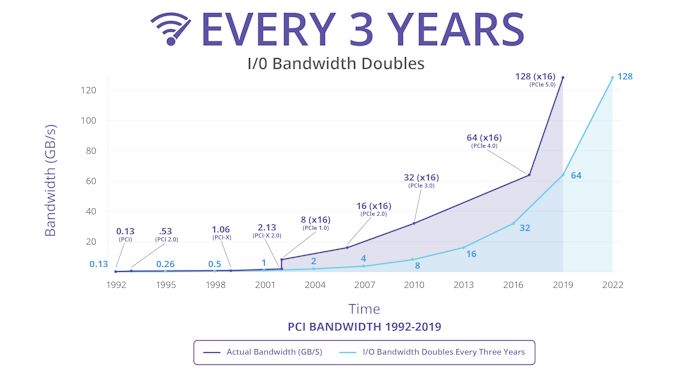
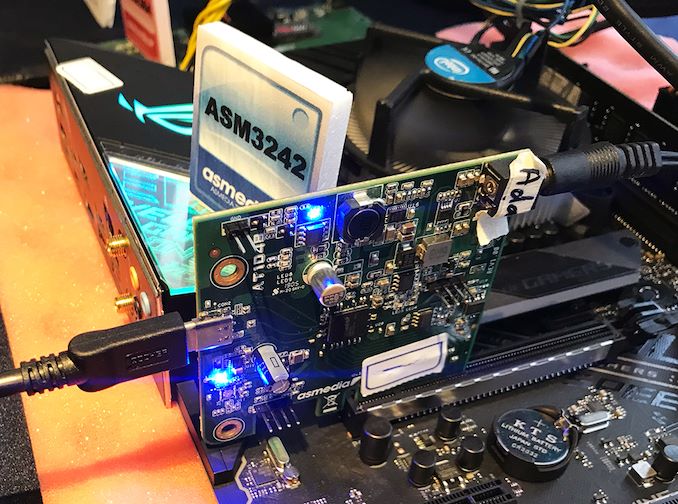
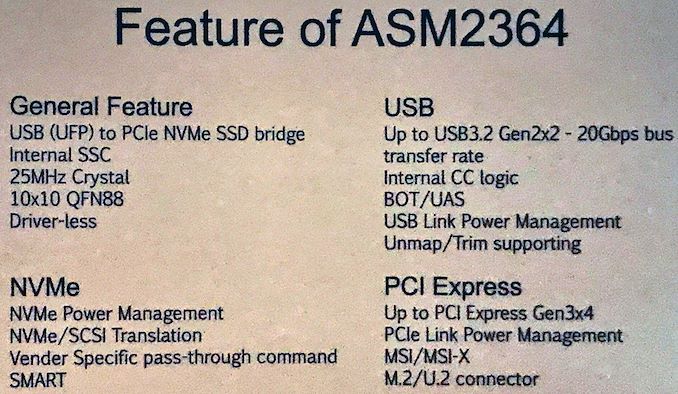
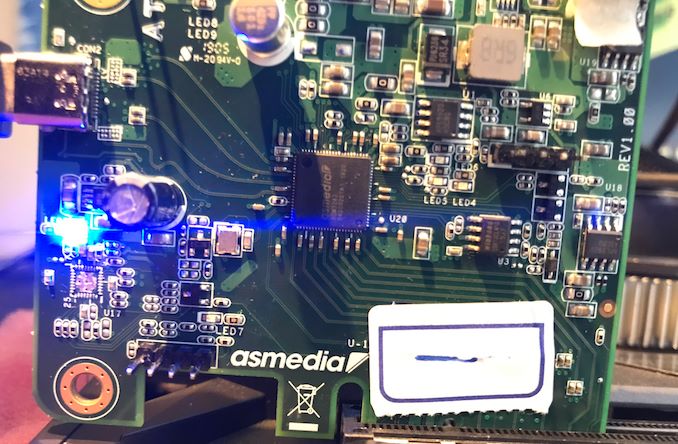
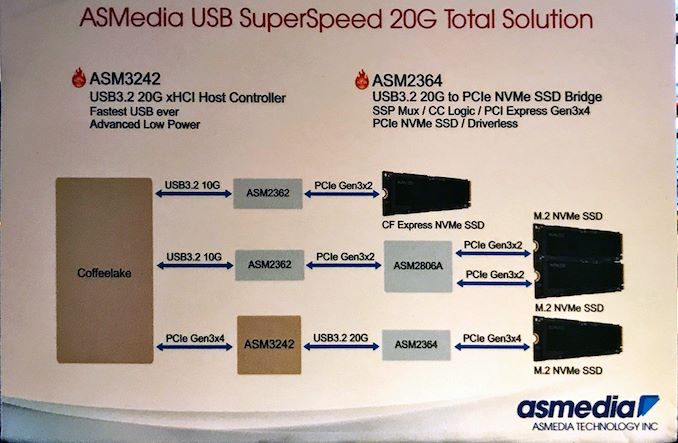
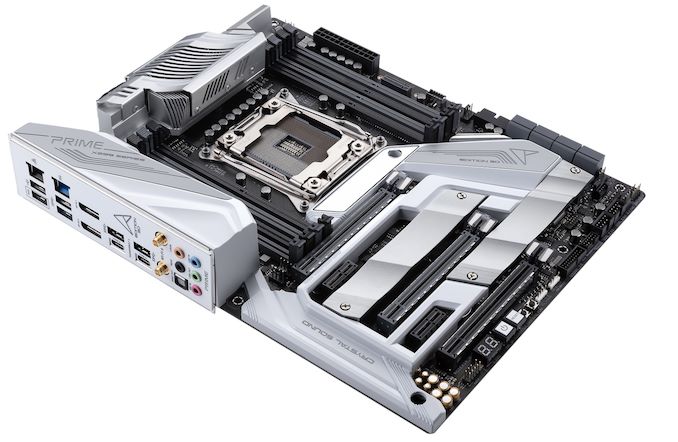
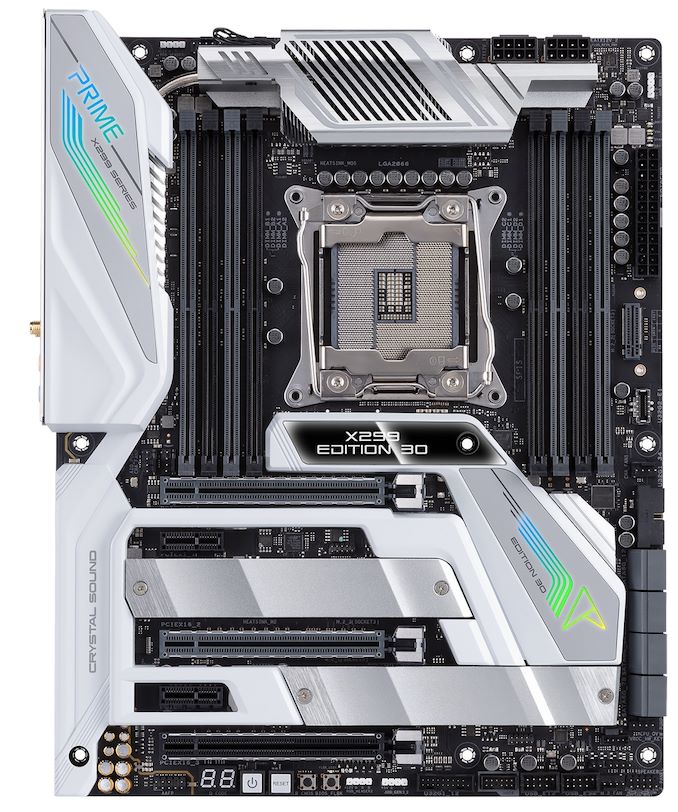
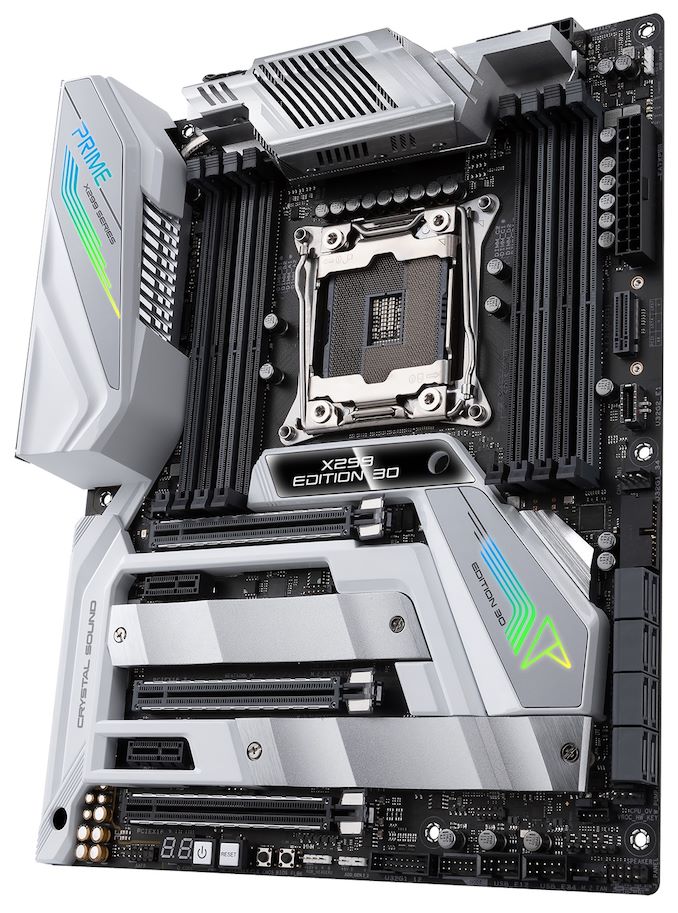
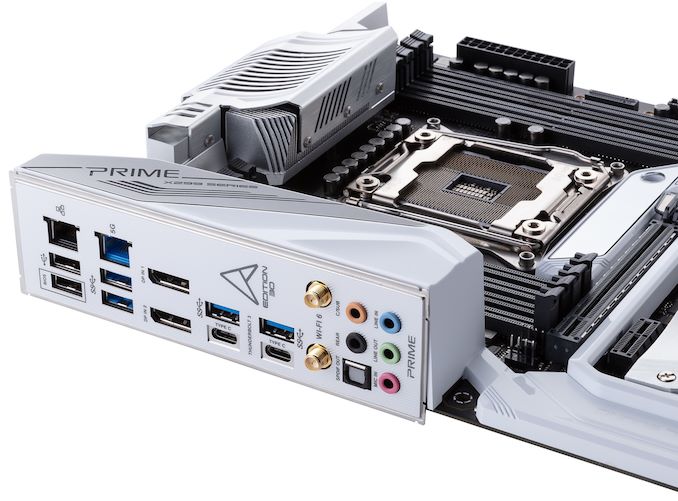
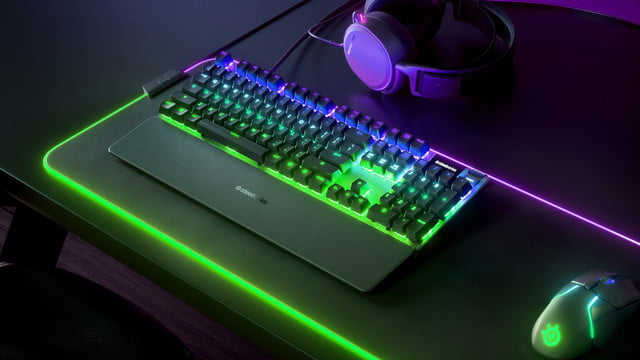
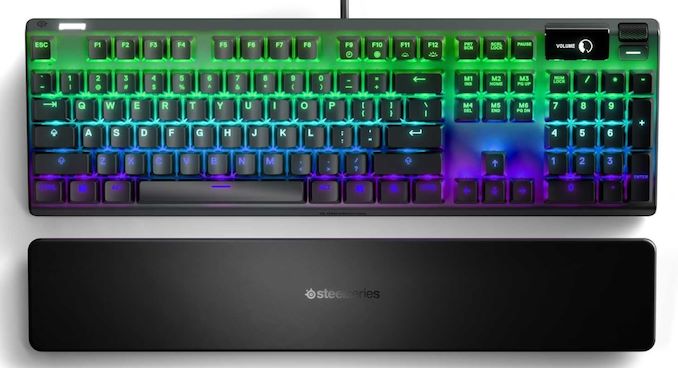

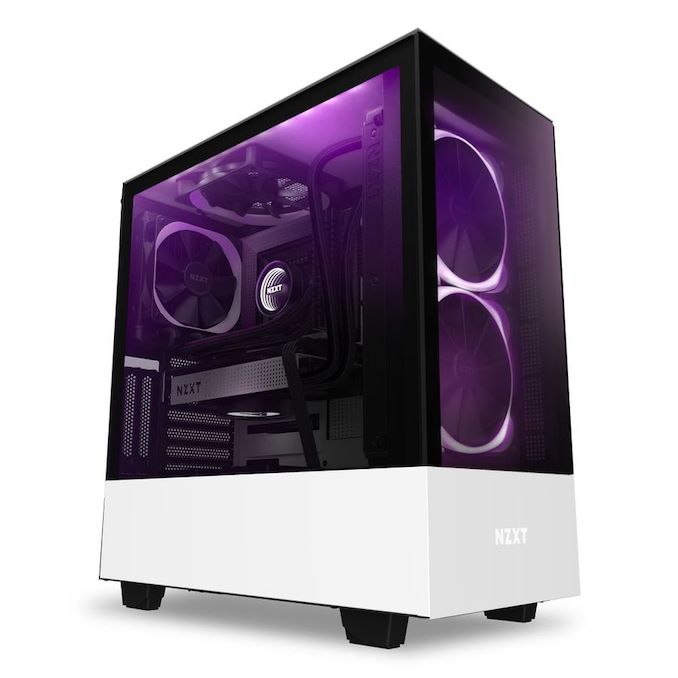
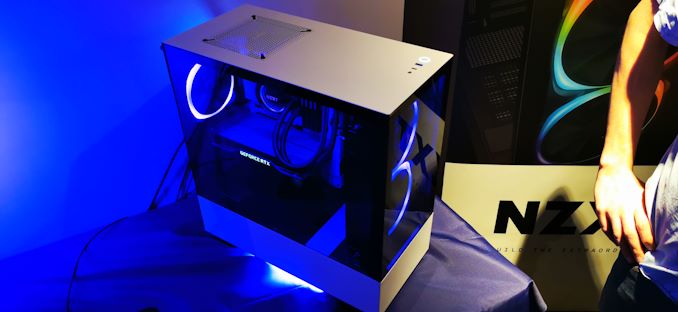
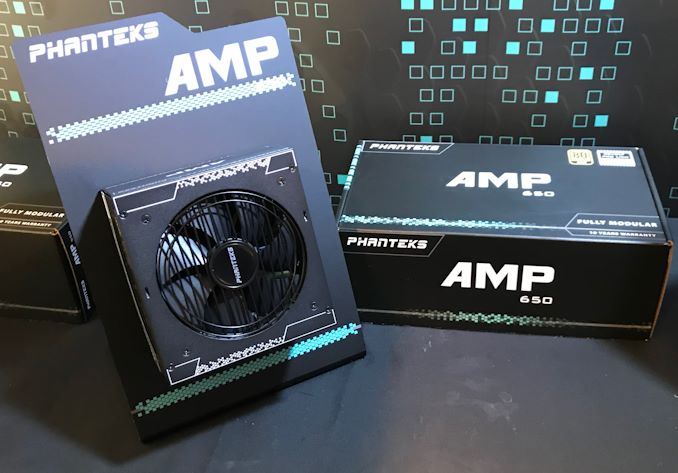
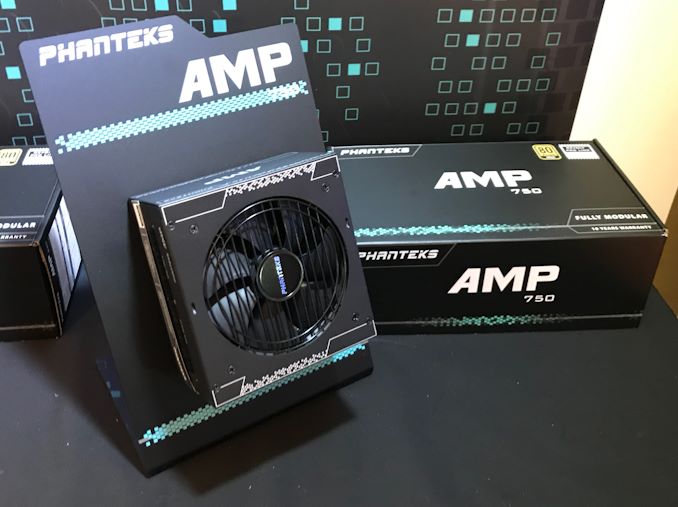




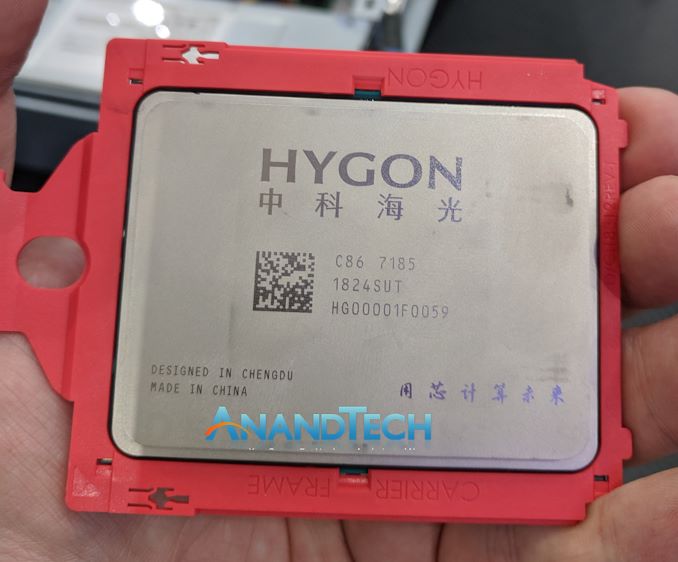
_575px.jpg)
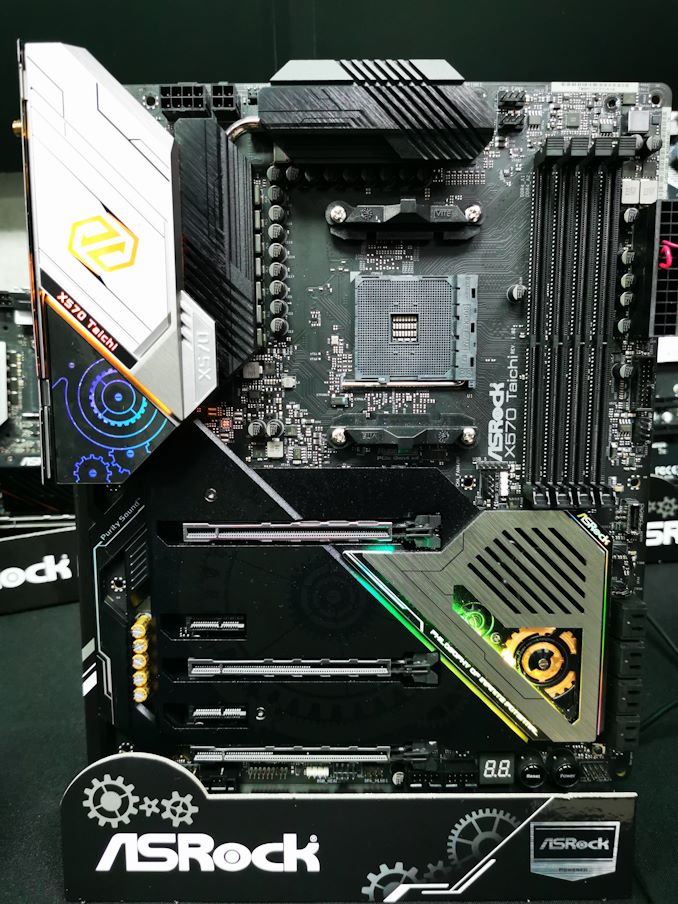
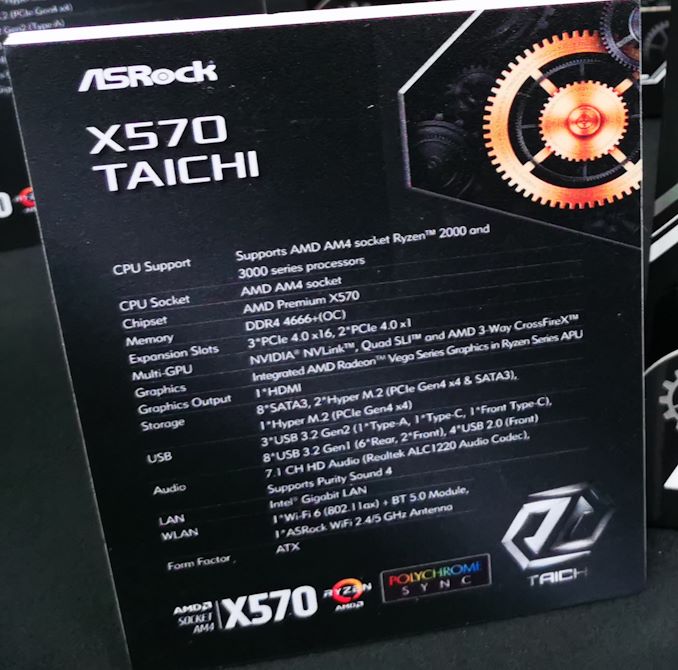
















Bookmarks